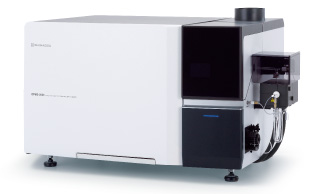- Proprietary Advanced Mini-Torch System
- Redesigned Collision/Reaction Cell
- High-Performance Quadrupole Mass Filter
- Redesigned Collision/Reaction Cell
- High-Performance Quadrupole Mass Filter
Shimadzu’s ICPMS-2040 Series / ICPMS-2050 Series of ICP Mass Spectrometers has achieved a harmonious blend of environmental-friendliness and analytical performance through its advanced proprietary Mini-Torch System. Without the need for any special options, it reduces measurement time, contributing to the optimization of your workflow efficiency. Moreover, the software comes with various functions, options, and maintenance information that minimize operator intervention, revolutionizing the way you work.
